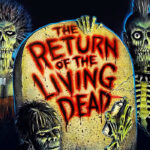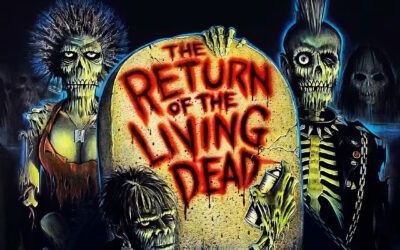Are you that person in your friend’s group who loves to tell stories? Are you constantly looking for ways to improve your storytelling skills? Do you love engaging your audience and having them sit on the edges of their seats to know how a story progresses? Well, if you have answered the above questions with a resounding yes, you’ve come to the right place.
Writing and telling scary stories is an art form in itself. Scary stories, if told correctly, can engage and capture the audience’s attention throughout the storyline. There are many ways in which a storyteller can tell scary stories effectively. In this article, we shall uncover some of them.
-
Describe your scene well
Good storytelling involves describing a scene in detail. The description of a scene is important because it helps readers and audiences who are listening to the story visualize where the characters are. A description of a scene also helps to explain character movements and gives insights into why a character would behave or react to situations in a specific manner. Setting a scene can also evoke particular emotions in the target audience of the story. Scary stories and horror stories use the element of scene-setting to their advantage to evoke emotions of anticipation and dread in the viewers and audience of a story.
Some popular elements of a scary story scene setting include a graveyard or haunted house, nighttime settings without many people in the background, the noise of nocturnal animals, chilly winds, and more. These elements immediately evoke a sense of spookiness or horror in any story.
Enhance the spine-chilling experience of your scary stories with expertly crafted audio descriptions; discover top-notch audio description services found here to add an extra layer of suspense and immersion to your tales.
-
Create tension between characters
The second most important aspect of scary stories is the tension between characters. Think of a murder mystery, for example. By creating tension between a murderer and their victim, you can evoke a sense of discomfort and anticipation, along with fear. Similarly, you can also create tension through the character’s interactions with his or her surroundings. For example, you can make a character move closer and closer to the object that scares them or make them rear a loud noise like a scream, a gunshot, or a wail.
One can create tension in their stories by other means as well. They can set up their story so that two characters in the exact same situation perceive the situation differently. A simple example of this would be the following – Imagine two friends who are living in the same house – one friend can constantly hear some strange noises, but the other friend cannot. This could act as a setting in a horror story and also create tension between characters.
-
Use voice modulation to your advantage
Voice modulation is the technique of changing your voice while narrating your story. By using a fearful voice while narrating your story, you will automatically be able to induce the desired emotion in your audience. You can modulate your voice to make it quiet and then suddenly loud or high-pitched to capture and retain the attention of your audience. In addition to that, you can also increase or decrease the pace at which you will narrate your story to create suspense and a feeling of anticipation about what might be coming next in the story.
-
Practice your delivery
Practice makes perfect. There are many steps involved in practicing your stories.
- Step 1: The first step to finding your perfect delivery style is discovering your perfect story. You can read some scary stories, watch horror and thriller movies and do some research to inspire you and give you ideas about your own stories. Then, you can take the help of professional writers to refine your story. Do not worry if you are thinking, “I need help with writing my paper or scary story” you can take the help of professional writers to articulate your thoughts in the written format better. With professional help and some solid, expertly-written examples, your writing and storytelling abilities will improve.
- Step 2: Once your story is written down, read and experience it thoroughly. Familiarize yourself with the story’s details and ensure that you are comfortable with the events and emotions in every aspect of the story.
- Step 3: Write down the spoken script of your story. The spoken script of your story is different from the way your story has been written. The spoken script will include directions, stage presence, and tonality, among other things.
- Step 4: Once the spoken script is ready, rehearse your script in front of a mirror. If you find it overwhelming initially, that is not a problem. Many performers who perform for the first time feel the same way. With practice, your confidence will improve. You can also practice your story delivery in front of your close friends or trusted family members before performing in front of a larger audience.

A Few Concluding Thoughts
Storytelling is about evoking the right emotions in the audience. While telling a horror story, you can make your audience feel scared, thrilled and horror stuck by events happening to the characters and the way these characters are reacting to their surroundings. We hope this guide will give you enough knowledge on the subject to feel confident about your storytelling skills, and you can shock your audience with your powerful and engaging scary stories in the future.














